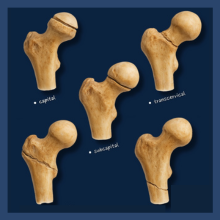Creating Immersive 3D/VR Surgical Video: A Step-by-Step Guide
Surgical video is an invaluable tool for education, collaboration, and even assessment. But what if we could take it one step further and create an immersive three-dimensional experience that allows viewers to feel like they are in the operating room with you? Advances in video capture technology have made it possible and relatively inexpensive to do this. Below we'll show you how to take your surgical video to the next level with 3D and virtual reality (VR).
Capturing 3D/VR Surgical Video
Capturing 3D and VR surgical video presents a unique set of challenges that are quite different from those encountered while filming in 2D.Creating 3D or virtual reality video typically requires a special camera capable of capturing depth perception. The Vuze XR and Insta360 PRO are two excellent options that allow you to capture the surgery in both 2D and 3D, giving you the flexibility to choose how the video is ultimately presented.
3D/VR Filming Tips
To optimize the quality of your footage, ensure that your camera is positioned correctly and oriented properly to capture the appropriate angle and depth of the field in a surgical setting. Here are some tips for capturing high-quality 3D/VR surgical video:
- Position the camera at a distance that is neither too far nor too close to the surgical field
- Place the camera at a height that provides an optimal view of the surgery
- Ensure that the camera is oriented correctly to capture the surgeon's movements and the surgical instruments in a natural way
- Use appropriate lighting to capture clear and detailed footage
The same captured video footage can be easily used to create a fully immersive or VR experience, although it does require additional virtual reality headsets, such as the Oculus Quest 2 or the HTC Vive. These headsets allow the viewers to experience the surgery as if they were in the room with you, giving them a unique and valuable perspective.
Editing 3D Surgical Video
As with traditional surgical video, editing is crucial to create a polished final product. 3D video editing options sometimes include proprietary programs, but there are some other programs that we discussed below as well. Here are some tips for editing your 3D surgical video:
- Choose an appropriate editing software that supports 3Dvediting (Adobe Premiere Pro, Final Cut Pro, Magix)
- Use appropriate transitions and effects to enhance the viewing experience
- Add annotations to highlight important aspects of the surgery
- Ensure that the video is properly synced and aligned to create a seamless 3D effect
>READ MORE: 7 AI-Enabled Tools to Improve Surgical Video Editing
Benefits of 3D/Virtual Reality Surgical Video
Why consider 3D and virtual reality? The answer is simple. It allows a more immersive, detailed, and accurate representation of the surgery you are performing. It can also be a valuable tool for training and education, particularly for medical students and residents, but also for practicing surgeons. In practice, with the right equipment and software, you can create an immersive and invaluable viewing experience.
Capturing 3D and VR surgical video requires specialized equipment, software, and editing skills, but the results are worth it. By providing a more immersive and realistic video experience, you can improve the understanding of complex surgical procedures and enhance the ability of surgeons to prepare for and perform
>RETURN TO SURGICAL VIDEO HOME PAGE
RELATED CONTENT:
- Mastering DIY Surgical Video: Best Practices
- Revolutionizing Surgical Video with AI Tools
- 4 Steps to Shooting Pro-Quality Smartphone Video
- GoPro for High Quality Surgical Video








